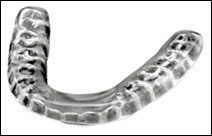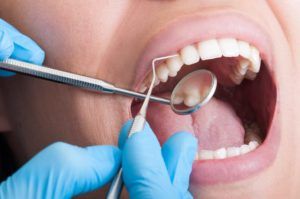
CEREC
CEREC has changed the way dentists perform patient restorations. CEREC stands for ‘ceramic reconstruction.’ It’s a 3D imaging and camera assisted design center that allows dentists to take digital impressions of patient teeth and use the images to create a virtual restoration. The images can be sent to a dental laboratory for fabrication or combined with an in-office milling unit for same-day restorations. CEREC can be used to produce onlays, inlays, crowns or bridges without taking molded impressions.
Continue Reading...
Galileous and Implant Planning
Dental implants are permanent prosthetics that restore a mouth’s function and aesthetics. A prosthetic tooth like an implant is needed when a person has lost teeth due to decay, sickness, or lifestyle accidents. Instead of having to take dentures in and out, implants stay in your mouth permanently and are cared for like your other teeth.
Continue Reading...
Root Canals
Root canals are valuable dental procedures used to treat and preserve teeth with badly infected roots. The pulp is the live portion of the tooth that extends into the root and contains nerve endings and tissues. When it becomes infected, patients can experience pain, swelling and even total tooth loss unless treated. Root canals remove the damaged parts of the tooth and infected root. In some cases, an antibiotic is prescribed to help prevent further infection within the tooth. The organic portion of the tooth that remains may be restored using a cap or crown that provides a natural appearance and normal tooth function.
Continue Reading...
Invisalign® and Clear Correct
Invisalign is an orthodontic appliance system used to inconspicuously treat crooked and crowded teeth in adults and teens. This modern take on braces features a system of clear aligner trays that are worn at all times with the exception of during meals and when brushing or flossing. The trays are custom fitted to the teeth, making them virtually unnoticeable when laughing, talking, and eating with other people. Patients receive a sequence of trays, each of which is slightly different than the one before. The aligners provide a slight resistance to the teeth, forcing them to move into alignment over time. With Invisalign, adults and teens can achieve the smiles they’ve always wanted without feeling self-conscious about the mode of treatment.
Continue Reading...
Veneers and Laminates
Dental veneers – also known as laminates – are used to cosmetically enhance the appearance of one or more teeth. Veneers are very thin, porcelain or resin shells that are customized for a desirable color and shape. They are bonded to the surface of the teeth to reshape broken, misshapen or irregular teeth, as well as provide a solution for discolored teeth that do not respond to traditional whitening treatments. Patients with veneers typically achieve a natural tooth appearance that is well-tolerated by the gums and also resistant to future stains.
Continue Reading...
Composite Tooth-Colored Fillings
Composite fillings – also known as tooth-colored fillings – are dental restorations designed to be inconspicuous and natural in appearance. They blend well with the teeth and appear more natural than amalgam fillings, which are darker and more easily seen by other people. Composite fillings are made of ceramic and plastic compounds that chemically bond to the teeth. They can be used to fill in decayed areas of the teeth, as well as to help repair chipped or broken teeth. Most dentists use composite restorations to treat the teeth closest to the front of the mouth, as they are more noticeable when patients smile. However, advancements in dental technology and the composition of composite fillings have made it possible for Auburn dentists to also use tooth-colored fillings on molars, which receive more wear than other teeth.
Continue Reading...
Partial Dentures
Like a bridge, partial dentures rest on surrounding teeth to fill in the gaps where one or more teeth are missing. But unlike a bridge, partial dentures are fully removable by the wearer. Partials are affordable alternatives to other types of dental prosthetics and are custom-made to blend in with each patient’s natural teeth. It takes a little time to adapt to new partials, but many people find that they reclaim much of their original function and aesthetics with partial dentures in place.
Continue Reading...
Dentures
Dentures are an effective and affordable way of replacing missing teeth. Composed of a durable plastic resin and sometimes porcelain, both partial and full dentures can be fabricated to look and feel natural. Today’s dentures are custom-fit to make it possible to eat foods with confidence and speak articulately. Depending on the patient’s preferences and budget, dentures can be crafted for maximum comfort and fracture resistance backed up by limited warranties.
Continue Reading...
Tooth Extractions
Tooth extractions are routine dental procedures used to remove decayed, damaged or otherwise problematic teeth. Dentists usually make every effort to preserve natural teeth, although sometimes an extraction is necessary. Although the procedure is performed in a dentist’s or oral surgeon’s office, it is considered surgery. Depending on which teeth are removed, they may be replaced with a dental implant or another oral prosthetic.
Continue Reading...
Dental Sealants
Dental sealants are clear coatings applied to the surfaces of a child’s molars to prevent the development of tooth decay. They work by preventing food and plaque from resting in the grooves and crevices of molars – an area especially susceptible to cavities. According to the National Institute of Dental and Craniofacial Research, nearly 1 in 3 U.S. children ages 6 to 12 currently have sealants on their teeth.
Continue Reading...
Bite Guard / Night Guard
A bite guard is a dental appliance custom-fit to a patient’s teeth. Bite guards serve varying purposes and are often recommended for use in patients of all ages. It is important that bite guards be professionally fit, rather than purchased over the counter, as this ensures maximum comfort and protection during wear. Professional dental guards are usually prepared in a dental lab using an oral impression taken in a dentist’s office. These guards are created uniquely to each patient to prevent discomfort, slippage or inadequate protection. There are many reasons why a dentist would prescribe a mouth guard to a patient.
Continue Reading...
Dental Cleaning & Consultation
Preventative care is a foundation of dentistry. The American Dental Association recommends visiting your dentist regularly – usually about twice yearly – for full cleanings, examinations, and consultations for potential treatment. Professional dental cleanings help remove built-up plaque that is not removable using conventional brushing and flossing. Often, dentists are also capable of identifying potential problems that patients are not yet able to see or feel. When you maintain regular preventative dental appointments, you can stave off decay and gum disease, as well as identify the beginnings of oral health problems before they become severe.
Continue Reading...
Periodontal Scaling & Root Planing
Periodontal scaling and root planing are procedures used to treat periodontal disease. Thought of by many as a ‘deep cleaning’, this in-office procedure involves the careful removal of hardened plaque near the gum line, where harmful bacteria can grow and cause damage to both the hard and soft tissues of the mouth. The treatment starts with scaling, during which special instruments are used to scrape tartar away from the teeth and gums. Root planing follows, which is a process of smoothing the surface of the tooth’s root in order to prevent bacteria from accumulating there in the future. Finally, an antibiotic is administered to ensure that no bacteria remain at the treatment site.
Continue Reading...